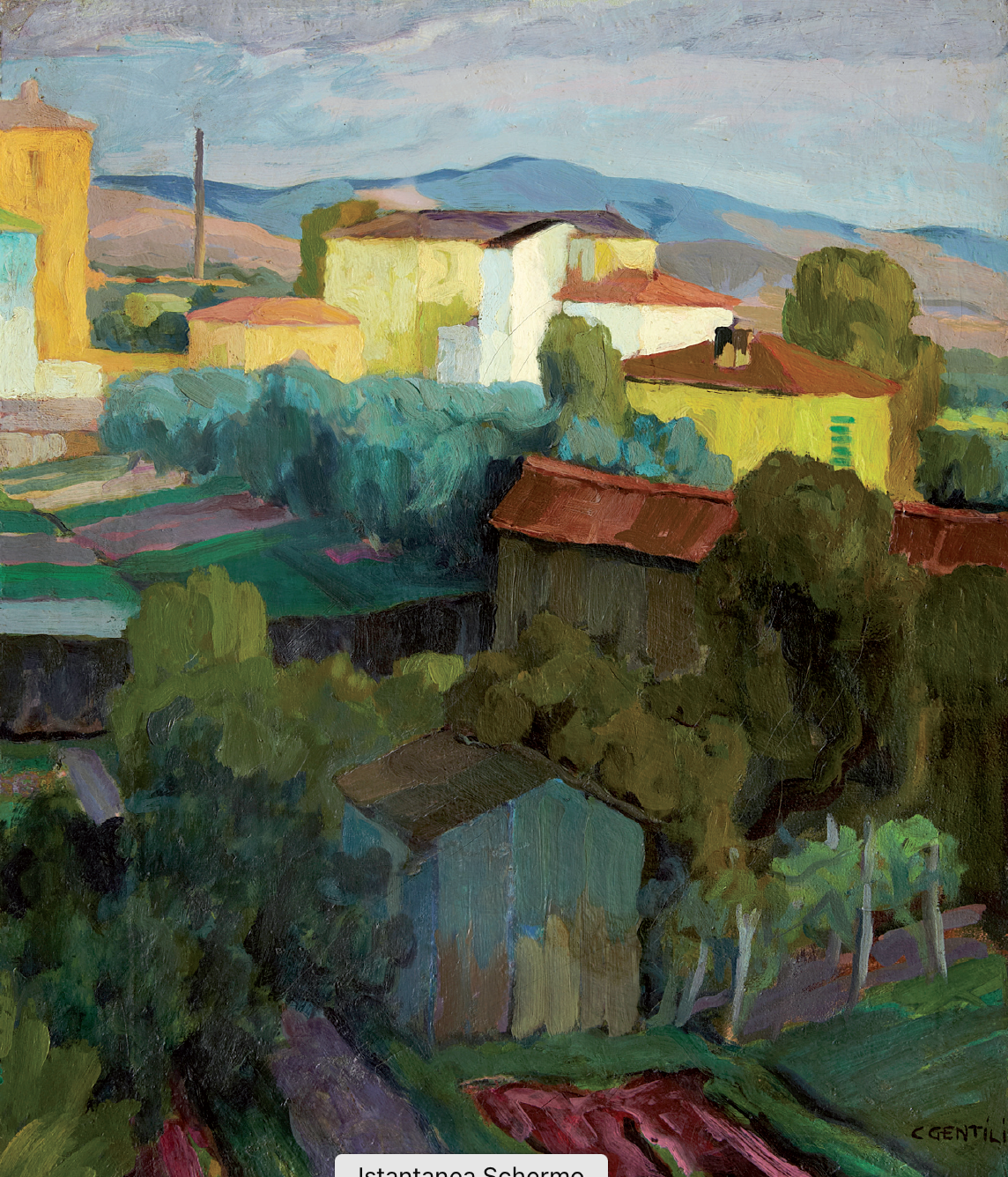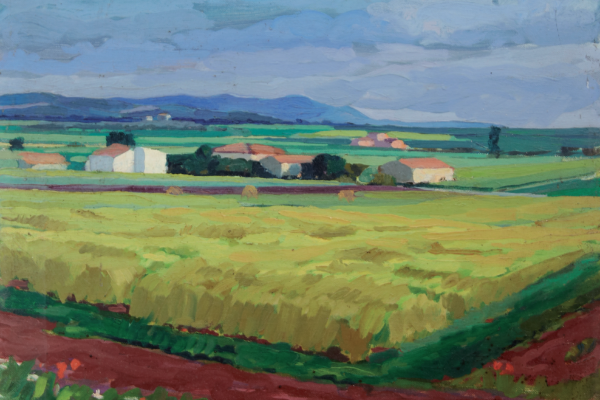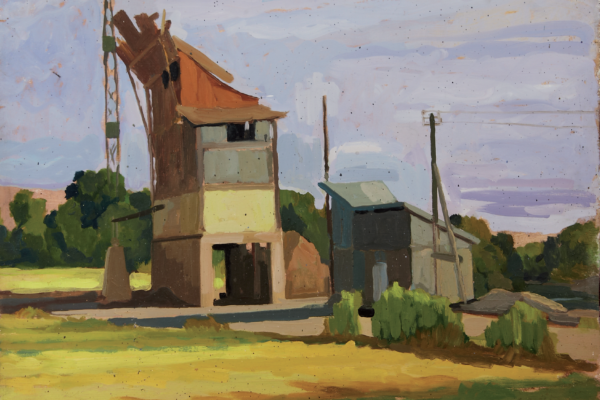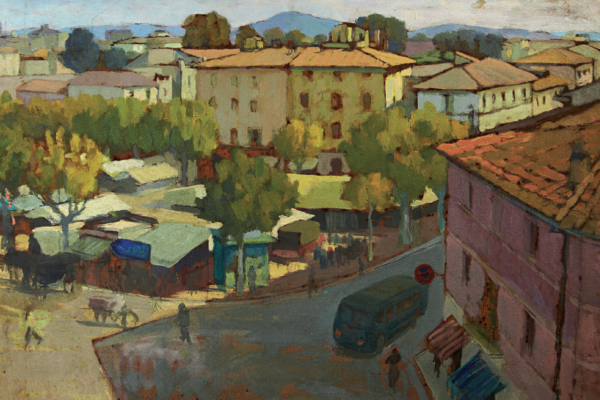In Gentili’s works modern technology is inserted seamlessly into history and nature in a positive vision of industrial progress typical of the post-war period. The modest houses, built in a rural style and accompanied by vegetable gardens, stand against a background of a factory chimney and tall apartment buildings announcing the new reality of workers’ lives.
Outskirts
Carlo Gentili
Grosseto, 18 October - 17 July 1996
At the age of twelve, Carlo Gentili entered the workshop of the sculptor Ivo Pacini as an apprentice, where he became acquainted with the artists of the Grosseto area. In the 1930s he began devoting his efforts to landscape painting, which he presented from 1935 to 1940 at labour union shows in Grosseto and Florence. At the same time, he opened his own studio in Piazza della Palma in Grosseto, where he worked as a painter, sculptor, and sign painter; it soon became a gathering spot for the city’s intellectuals and artists. In 1941 he took part in the show of the “Gruppo Grossetano” at the Galleria Grande in Milan; but because of the war he moved to Monzone, in the Apuan Alps, from where he stayed in contact with Grosseto and Rome. In 1943 he participated in the fourth Quadriennial of Rome and in 1945 in the first show of Free Artists organized by the Italian Communist Party in the Singer Hall on Corso Carlo Alberto in Grosseto. After the war he was a founder of the Circolo Artistico Grossetano, which from 1946 ran La Chimera, the first permanent gallery space in the city. Named a city councillor and then commissioner in the municipal administration, he joined the union of painters belonging to the CGIL and in 1955 took part in the Realism exhibition in Grosseto. In 1963 he founded a public school of fine arts, which was forced to close by the flood of 1966. His realism in portraying landscape was evident in “Arte Contro. 1945-1970, from Realism to Protest,” curated by Mario De Micheli in Palazzo Cosmini in Grosseto, but his true recognition as an artist only came a year after his death, with the personal anthology exhibition mounted as part of the Celtracon International Review of Art in Grosseto and the show organized in 2010 in Grosseto on the centenary of his birth.






